Origin PC Shows Off High-End Notebooks and the “Not-a-Steam-Machine” Omega
by Jarred Walton on January 13, 2015 7:00 AM EST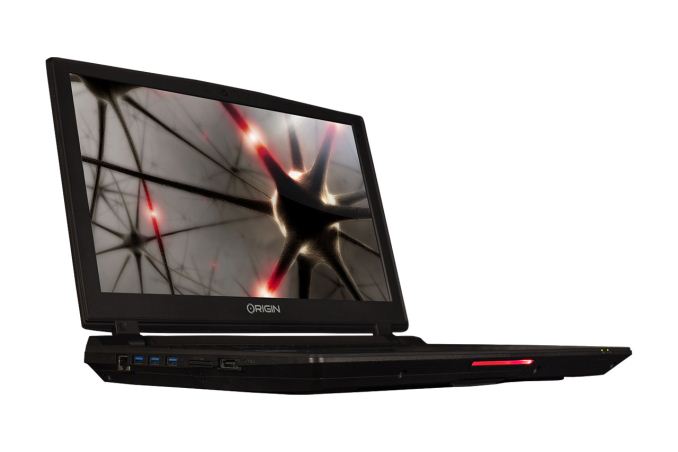
CES now over, which means for a lot of the editors we can finally sit down and write about some of the stuff we saw during the week. If you follow me on Twitter, you were able to see a bunch of the products I looked at in pseudo-real-time, but Tweet limitations mean there’s often far more to be said. So rolling back to last Wednesday, let’s go over my meeting with Origin PC.
This was the first time I was able to go hands on with the new Clevo laptops. The designs have been updated since the last generation, with some minor to moderate tweaks in terms of aesthetics. Perhaps more importantly, they Clevo ditched the awful (IMO) trackpads from the last generation, so there's no "tribal tattoo" this time.
For the mainstream mobile segment, Origin was showing the Clevo P650SG, which they call the EON15-S. It’s the update to the P150SM more or less, with support for up to GTX 980M. This is still running Intel’s HM87 Mobile Haswell platform, but of course standard voltage and quad-core Broadwell hasn’t launched yet so that’s to be expected at the high-end. The CPU is the i7-4720HQ, and the chassis has support for two M.2 SATA drives (or two M.2 PCIe drives) along with two 2.5” drive bays.
Origin also says the laptop has “4K gaming support with 4K Ready external display”; 3K and 4K 15.6” displays are available on the market, but for now it doesn't appear Origin will be offering the EON15-S with those; I believe the included 1080p display was wide viewing angle at least, which is likely sufficient for most users. I didn’t have a lot of time to really get a feel for the laptop, but while the keyboard looks pretty much unchanged the touchpad was much more responsive than the last P157SM that I tested, and it is using a Synaptics touchpad. The new EON15-S is also 36% thinner (1.13”) and 25% lighter (5.5 lbs.) than the previous model, which is a welcome change.
For those who are looking for extreme performance, Origin PC has two new notebooks that have desktop CPUs, including support for the Devil's Canyon i7-4790K. Origin calls these the 15.6” EON15-X and the 17.3” EON17-X, and they use the Clevo P750ZM and P770ZM, respectively. Overclocking is apparently supported, but only up to 4.5 gigahertz – though that is on all four CPU cores. Of course battery life will take a hit, with or without overclocking, so these are very much transportable laptops rather than something that you could use unplugged for a long period of time.
Other features are similar to the P650SG: dual M.2 PCIe drives with dual 2.5” drives for HDD/SDD use. The laptops all support four SO-DIMMs for up to 32GB RAM, and Origin plans to ship 1080p IPS displays in these systems (though it might take a bit longer to get in sufficient supply of the 17.3” IPS displays; the model they showed was still using a TN panel). Also note that all three models have dropped support for optical drives, so if you need an optical drive you’ll have to look at other options. The EON15-X measures 1.4” thick and weighs 7.49 lbs. so it’s not exactly light, but it is a reduction compared to the previous model. EON17-X meanwhile sees some larger changes, reducing the thickness by 37.5% (1.52” thick now) and it weighs 8.59 lbs. All of the EON notebooks also support full color configurable RGB zoned backlighting.
Origin also carries MSI based laptops now, with Origin PC branding. They had the new GS60 based notebook on display, the EVO15-S, sporting the GTX 970M. This model was also equipped with a 4K 3840x2160 panel, which is one step up from the 2880x1620 model I reviewed last year. I don't expect cooling and battery life has improved much since the 870M MSI variant I tested, though it’s possible firmware tweaks have helped. Regardless, this is still a nice looking notebook and the 970M should offer more performance with perhaps slightly lower power requirements.
All of these notebooks are available for order now and should ship in the near future. Origin PC systems tend to cost a lot of money and they list the starting price at around $1850; that includes the 980M on the new EON15-S, but that's with 8GB RAM and a 500GB HDD. A single 480GB PCIe SSD and 16GB DDR3-1600 (and no HDD) will result in a price of $2406. As for the EON15-X, the base price includes the 970M and an i5-4460S, which seems pointless as anyone after a desktop processor will probably want something significantly faster than mobile options. With a 980M, 16GB RAM, 480GB PCIe SSD, and an i7-4790K, the price jumps to $2874. The EON17-X is slightly more at $2906 with the same components, though again note that the display at this time isn't an IPS panel.
In short, Origin PC provides a premium laptop experience for dedicated gamers that have enough cash to afford the fastest systems. Origin does offer some free aesthetic alterations to their notebooks at least (multiple colors are available for the top cover) and they provide lifetime 24/7 US-based phone technical support for customers. Laptops that support overclocking also receive "free" professional tuning, though I personally am hesitant to recommend overclocking of any laptop as they already tend to run hot and loud with this level of performance; YMMV.
One final item to quickly mention is the upcoming Origin Omega. This was previously supposed to be a Steam Machine when Valve first launched the platform, but delays to the Steam Machine platform (ostensibly due to controller modifications) have delayed that long enough that many companies are choosing to ship the PCs with Windows. That’s the situation with the Omega, a system with support for liquid cooling and up to two GTX 980 or Titan Black GeForce cards in SLI. Pricing will depend heavily on the configuration, with availability planned for this quarter.
Source: Origin PC


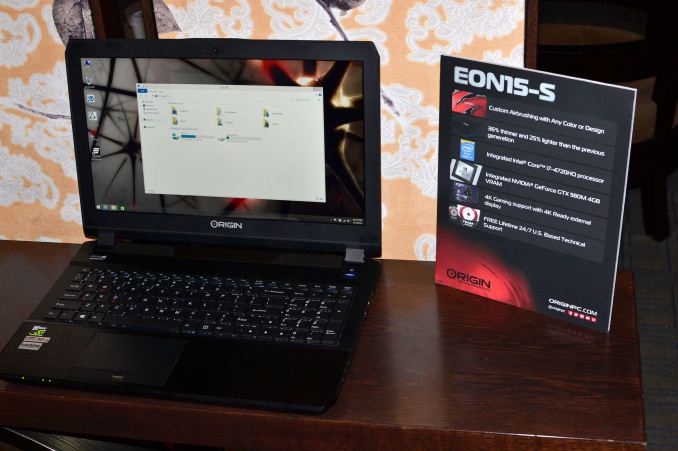
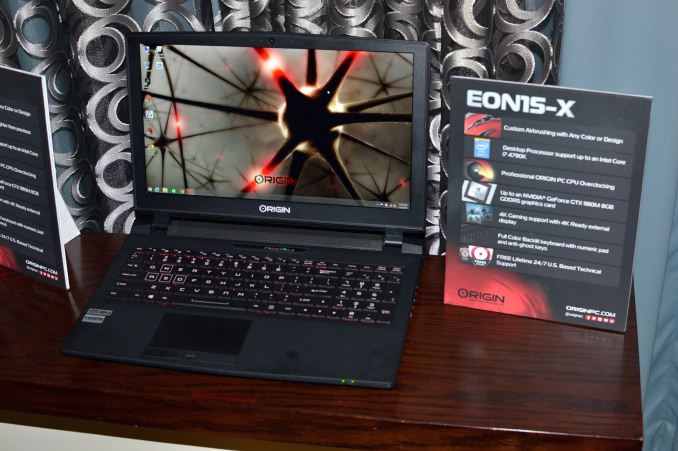
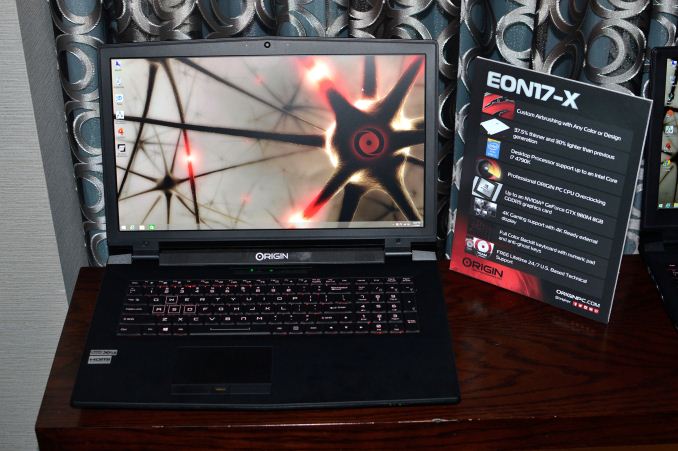
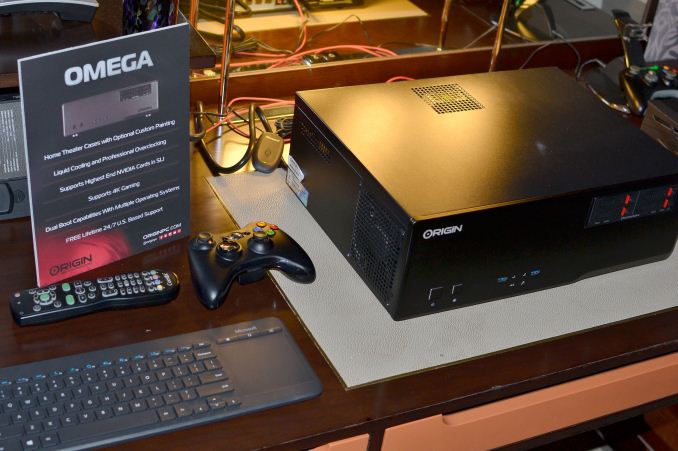














33 Comments
View All Comments
chizow - Tuesday, January 13, 2015 - link
Because the license fee was one of Valve's main marketing points against Windows, when in reality, its a small price to pay for something that works well and actually has a huge library of games already available.Microsoft is an extremely flaky company? Sure they've had some misses, but they've had far more hits. It could be worst, I mean we could have to rely on some Linux distro, Max OSX or gasp some vaporware like Steam OS for our desktop computing needs. Is that even a thing anymore btw? Haven't heard much about it lately.
JarredWalton - Tuesday, January 13, 2015 - link
Honestly, I think Steam OS was a reaction to the initial idea that ALL applications on Windows 8 would have to come through the Microsoft Store. That would be a huge problem for a lot of companies, and when MS made that claim people like Valve took exception and started looking for alternatives. Since then, MS has greatly relaxed the Store requirement -- basically, it's not required for anything I don't think -- so of course that means Steam OS is no longer in much demand.In theory, the delays with Steam OS and Steam Machines are mostly about getting the controller right, but in reality I'd wager that Steam OS is more of a contingency plan than something Valve is really set on any more.
MTRougeau - Tuesday, January 13, 2015 - link
"...in reality I'd wager that Steam OS is more of a contingency plan than something Valve is really set on any more." I think this is spot on. Gabe Newell described SteamOS as a hedging strategy when it was first introduced. Fortunately, Microsoft looks like they are correcting several mistakes with Windows 10, so SteamOS isn't as necessary as it once was. I wonder if the threat of a free, gaming-centered OS influenced any of Microsoft's decisions with regards to their next OS?Penti - Wednesday, January 14, 2015 - link
Well getting AMD and Nvidia onboard producing good drivers aren't all that easy either. The GNU/Linux distribution that is the SteamOS-project would have to have excellent support and integration for a set of basically of the shelf hardware parts. Limiting the actual hardware is one way, but outside Android there really is no Linux based systems where consumer end users interact with a complete system that way. It's more routers and stb's and other embedded systems deeply at the hands of the manufacturer. GNU/Linux distros is basically developer versions of a server OS/distro, and hardware manufacturers only support it in server environments meaning only community support for the desktop. Which isn't enough here. Valve doesn't really wants to become an OS company, but that is what would be needed for SteamOS to be usable. Companies releasing hardware would have to make sure their stuff contains firmware that is compatible (or doesn't break comp when updated) and that necessary drivers are bundled with SteamOS or at least make sure that the installer works and that drivers they build works with it.chizow - Wednesday, January 14, 2015 - link
I don't recall that being a key emphasis in the discussions about how SteamOS came into development, but it would certainly be understandable (although I think, impossible to enforce) if Microsoft was trying to cut into Valve's pie regarding digital distribution avenues in Win8.My take on it, from the various Newell articles/interviews, is that Valve views Steam as its own platform; one that is currently tied to Windows but one that he feels can survive without it. His goal was to make PC gaming more like console gaming and in order to do this, he had to offer a superior product at a price point much closer to traditional console pricing of $400-$500. Steamboxes were the answer to this problem, but there remained the fact Valve did not control the ecosystem, Microsoft did. Which is why SteamOS came about (delaying many Steam Box designs, like the X-51).
I know Valve was specifically critical about Windows on 2 main points, it cost money and its API was closed and Microsoft dragged its feet on DX spec. The cost aspect honestly was generally a non-issue for most who could afford PC gaming to begin with, but the API factor was a pretty big topic especially because Mantle had a lot of buzz at the time and DX12 had not yet been announced.
More on this from VentureBeat.
http://venturebeat.com/2014/01/08/ceo-gabe-newell-...
Personally, I think the controller is the smallest issue SteamOS faces. The biggest issue is the lack of any worthwhile, differentiating content. HL3 as SteamOS exclusive would go a long way to addressing that. The second biggest issue is redundancy and cludginess of implementation. Who really wants to dual-boot OSes? I did it for awhile when I was goofing around with various Linux distros and Hackintosh, but now I don't even bother. Lastly, they've yet to demonstrate any tangible benefit. Yes there are claims OpenGL with Nvidia is faster than DX with Nvidia, but DX12 will probably make this a moot point before SteamOS comes out of Alpha or whatever stage it is in.
But, I think we can all agree, SteamBox and SteamOS project has helped light a fire under Microsoft's ass to fix concerns with Windows and has also got a lot of hardware OEMs to come up with some pretty sweet designs for SFF PCs.
MTRougeau - Wednesday, January 14, 2015 - link
That was one of the main reasons why Valve explored an alternative OS/platform. Windows 8 was horrible in the beginning, forcing the Charms menu and Start Screen on everyone using a desktop. There were legitimate worries about Microsoft trying to pull an "Apple" with Windows, with the introduction of the Windows Store leading to concerns that they were slowly closing off the open nature of Windows over time. I believe this is what Newell was referring to when he famously used the word "catastrophe" to describe Windows 8: "We want to make it as easy as possible for the 2,500 games on Steam to run on Linux as well. It’s a hedging strategy. I think Windows 8 is a catastrophe for everyone in the PC space. We’ll lose some of the top-tier PC/OEMs, who will exit the market. I think margins will be destroyed for a bunch of people. … It will be good to have alternatives to hedge against that eventuality." Luckily, the horrid reaction to Windows 8 seems to have dissuaded Microsoft from their course, at least for now.chizow - Wednesday, January 14, 2015 - link
Yeah again, I can't recall at any point, any concern about the Windows Store preventing installation from any other COTS or digital source, just wouldn't make any sense and would be nearly impossible to enforce given Windows still has some of the best forward and backward application compatibility of any platform. There's simply nothing behind it, just fearmongering, imo.Sure Windows 8 was awful at launch for the desktop, but who cares? Its not like Windows 7 was going to stop working overnight and become a less viable gaming platform, or that Microsoft wouldn't listen to their users and fix the problem with Win8 in future iterations. As we have seen time and again (WinME > Win2K, Vista > Win7), Microsoft has rebounded, listened, and fixed their subsequent release to what their customers wanted over what they tried to push on their customers.
Again, its obvious to me, Newell simply wanted more control over the underlying platform that Steam depended on, but if making it easier to run the 2500 games on Steam easier was his goal, he certainly picked the wrong platform to do it on. Best of luck, with that Gabe. Read the articles, he talks about openness, but how open is SteamOS? How open is he planning to make it? How open is Steam client, right now? Why shut down Green Light if he wants a more open/transparent publishing process?
Reading his interviews, he just picked an opportunistic time to scapegoat Win8, but its obvious to me he wants Steam/OS to be the entertainment centerpiece of the living room in a digital household, same as MS and every other console/infotainment vendor. An ecosystem he controls and profits from, of course.
This article has a lot of good relevant links in addition to their own analysis:
http://www.pcgamer.com/exploring-valves-masterplan...
MTRougeau - Wednesday, January 14, 2015 - link
I think there was a trend towards closing off OS's, and the Windows Store kind of exemplified that. Not that Microsoft was going to close off Windows completely with 8, 10, or even their next OS, but things seemed to be headed that way.SteamOS is wide open. I don't know if you've tinkered with it or not, but it's basically a Debian fork. Valve makes it easy to get to the desktop (i.e. leave Big Picture mode) and install whatever you want onto the OS. Newell even said that Origin could be installed on SteamOS (if EA were to develop a Linux compatible Origin client, obviously). Valve has also mentioned several times about opening up Steam itself, by allowing different vendors to set up their own storefronts, and we've seen some movement towards that already with updates to that allow the store to be curated by, essentially, anyone. Newell has said that Greenlight will be phased out eventually too, as part of this process. Gabe even said that Origin could be installed on SteamOS.
For me, the big picture is about trends. Valve isn't totally open, and probably never will be, but they're becoming more open as time goes on. Microsoft seems to be trending in the opposite direction. It likely comes down to whether or not you agree with a more open philosophy as opposed to a more closed one. To each his own.
chizow - Thursday, January 15, 2015 - link
Not sure if this trend ever existed tbh, Microsoft has always acknowledged their PC system was an open platform based on a proprietary operating system. And I think history has shown, as the world's most diverse and well supported OS, it has played out perfectly.I haven't bothered with SteamOS (again, no use for it) but I have read the reviews and I do know it has obstacles to overcome beyond the cludgy install/self-support requirements. I guess anything that needs entry level Linux System Engineer type skills to install will face obstacles, but beyond that, the lack of support for a variety of hardware, applications, even companion apps are going to be a major problem for SteamOS adoption.
As for the rest, embracing competitors storefronts for example, I guess we will have to wait and see what comes of that, given Steam has already butted heads numerous times with the likes of Origin and Ubisoft in recent years regarding digital distrubution, undoubtedly tied to money.
But for me, its about trends as well, and continuing trends that work. I really don't care about the whole moral debate of open vs. closed, I only care about what is supported and what works well and far more often than not, we see the closed/proprietary version is the one that is superior in all aspects of implentation over the open/free alternatives.
MTRougeau - Thursday, January 15, 2015 - link
I agree SteamOS has a long way to go. Frankly, with Windows 10 coming out, I'm not sure it's as necessary as it once was. But I'm all for Valve getting developers on board to porting software over to Linux. I'm highly doubt we will ever see Linux exclusive games on Steam, especially from Valve (a la a HL3 SteamOS exclusive), so long as the market share of Windows remains dominant. But I have zero problem with a developer releasing a game on multiple platforms (Windows, Mac and Linux).